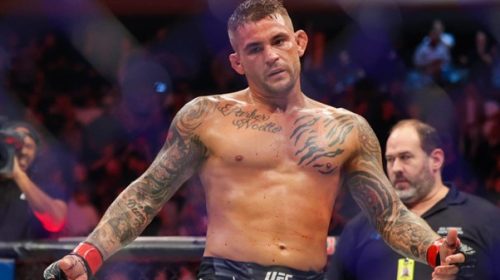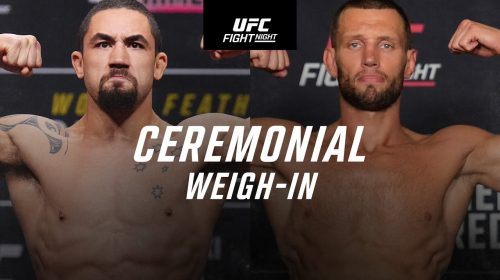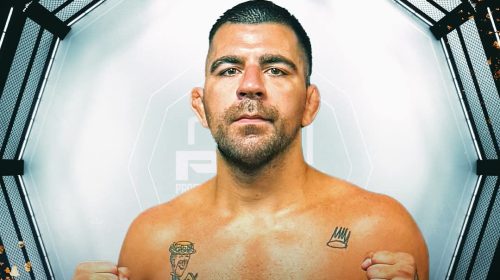
Strength and Conditioning for MMA: Building a Powerful and Functional Physique
Mixed Martial Arts (MMA) is a demanding sport requiring strength, speed, agility, endurance, and technique. Athletes in MMA must possess a powerful and functional physique to excel in the octagon.
This guide will discuss the key aspects of strength and conditioning for MMA. It will also provide insights into training strategies, exercises, nutrition, recovery, and injury prevention.
The goal is to help fighters reach peak performance and optimize their physical capabilities.
Understanding the Demands of MMA
MMA is a multidisciplinary combat sport incorporating striking, grappling, wrestling, and submission techniques. Fighters must be well-rounded and able to generate explosive power, maintain endurance, execute precise movements, and withstand physical challenges.
Strength and conditioning training is essential in developing the attributes necessary for success in MMA.
Training Strategies for MMA Athletes
MMA athletes must adopt comprehensive training strategies encompassing strength and conditioning, skill development, nutrition, recovery, and mental preparation. Here are effective training strategies explicitly tailored for MMA athletes that contribute to peak performance and success.
Periodization
MMA training requires a structured periodization plan that includes phases for building strength, power, endurance, and peaking for competition. This approach ensures progressive overload, prevents overtraining, and optimizes performance at critical moments.
Functional movements
Focus on exercises that simulate the movements and demands of MMA. That includes explosive plyometrics, agility drills, core stability exercises, and functional strength training using free weights, resistance bands, and bodyweight exercises.
Cardiovascular conditioning
Incorporate high-intensity interval training (HIIT), circuit training, and sport-specific conditioning drills to improve cardiovascular endurance and anaerobic capacity. These exercises are crucial for sustaining energy during fights.
Flexibility and mobility
Include dynamic stretching, mobility exercises, and yoga or Pilates to enhance flexibility, joint mobility, and range of motion. These workouts reduce the risk of injuries and improve overall athleticism.
Technical Skill Development
All the optimal workouts and nutrition for conditioning your body is only half of what you need. The other half is technique or technical skills, where the martial arts in MMA come into play.
Some of the best fighters in the MMA world have mastered at least one form of traditional martial arts. The most effective martial arts to grace the octagon include:
- Brazilian Jiu-Jitsu (BJJ): Brazilian Jiu-Jitsu focuses on on-the-ground fighting, submissions, and grappling techniques. BJJ practitioners can control opponents and submit them with joint locks or chokes.
They are specifically effective for neutralizing striker-type opponents by taking the fight to the ground where their expertise shines. Notable former champions include Georges St. Pierre, Anderson Silva, Junior Dos Santos, and Jose Aldo.
- Wrestling: Wrestling’s focus on takedowns, control, and ground positioning has made it a dominant martial art in MMA. Wrestlers are adept at securing takedowns, controlling opponents on the ground, and avoiding submissions.
These factors make them dangerous opponents in both stand-up and ground-fighting scenarios. Famous wrestlers who have won the gold include Brock Lesnar, Cain Velasquez, Demetrious Johnson, and Jon Jones.
- Boxing: The sweet science of boxing heavily focuses on punches, footwork, and head movement. Boxers often excel in striking accuracy, hand speed, and defensive skills.
These attributes allow them to outbox opponents and deliver powerful punches in the octagon. Fighters with the most dangerous hands in the octagon include Anderson Silva, Nick Diaz, Junior Dos Santos, and Conor McGregor.
- Judo: Judo focuses on throws, takedowns, and groundwork. Judokas can utilize throws, control their opponents in clinch situations, and apply submission techniques derived from their grappling expertise.
Talented judokas that have dominated the octagon include Vitor Belfort, Yushin Okami, Kayla Harrison, and Ronda Rousey.
- Karate: Certain styles of karate, such as Kyokushin Karate and Shotokan Karate, emphasize powerful strikes, evasive footwork, and defensive techniques. Karatekas in MMA often showcase dynamic striking, quick movements, and surprising attacks that catch opponents off guard.
Notable karatekas that enter the octagon include Georges St-Pierre, Robert Whittaker, and Lyoto Machida.
Dedicate time to perfecting a martial art that best suits your skill set. A well-rounded fighter must have an answer to any striking, grappling, or submission challenges their opponent brings to a fight.
Sparring and drills
Engage in live sparring sessions and drilling-specific techniques with training partners to apply skills in realistic scenarios. These sessions help improve your timing, reaction speed, and adaptability during fights.
Strength Training for MMA
Strength training is a standard component of an MMA fighter’s training regimen. It helps you develop your power, explosiveness, muscular endurance, and overall functional strength.
Compound exercises
Prioritize compound movements such as deadlifts, squats, bench presses, rows, and overhead presses. These movements help develop full-body strength, power, and functional muscle mass.
Explosive power
Incorporate Olympic lifts like cleans, snatches, jerks, medicine ball throws, box jumps, and kettlebell swings. These exercises will enhance your explosive power and fast-twitch muscle activation.
Core strength
Prioritize core stability exercises like planks, Russian twists, hanging leg raises, and anti-rotation exercises. These workouts improve your balance, posture, and rotational power, which are crucial for MMA movements.
Conditioning and Endurance Training
Conditioning and endurance training are essential to sustain high-intensity efforts throughout a fight. Effective conditioning and endurance training for MMA athletes include:
HIIT workouts
Integrate high-intensity interval training sessions combining sprints, burpees, kettlebell swings, and bodyweight exercises. These movements help improve anaerobic endurance, recovery, and mental toughness.
Circuit training
Design circuit workouts alternating between strength exercises, cardio bursts, and active recovery periods. The idea is to simulate the intensity and pace of MMA fights to prepare your mind and body better.
Long-distance running
Incorporate steady-state cardio sessions like long-distance runs, cycling, swimming, or rowing. These sessions build aerobic endurance and improve cardiovascular health. The idea is to enhance oxygen uptake, endurance capacity, and recovery between intense training sessions.
Nutrition and Recovery Strategies
All your hard work during your training goes to waste if you do not have proper nutrition and recovery strategies. Nutrition and recovery go hand-in-hand for optimizing performance, promoting muscle growth, enhancing recovery, and supporting overall health in MMA athletes.
Balanced diet
Maintain a balanced diet rich in lean proteins, complex carbohydrates, healthy fats, vitamins, and minerals. A balanced diet supports muscle growth, repair, and energy production. Consider working with a nutritionist to optimize dietary intake for performance and weight management.
Hydration
Even without strenuous exercise, you must always stay hydrated to stay healthy. This rule is more apparent during and after training sessions and fights. MMA fighters must keep hydrated to optimize performance, prevent fatigue, and support recovery processes.
Supplementation
Consider supplementing with protein powders, branched-chain amino acids, creatine, SARMs, and peptides. Proper supplementation supports muscle recovery, energy levels, and overall health.
Rest and sleep
Ensure you receive quality sleep and rest days to allow the body to recover, repair muscle tissue, and replenish energy stores. Incorporate relaxation techniques, massage therapy, and foam rolling to reduce muscle soreness and improve recovery.
Injury Prevention and Rehabilitation
Most non-contact sports can put you at risk of various injuries like fractures, dislocations, and even Achilles tendon ruptures. MMA takes these risks to new heights since it always involves making hard physical contact with your opponent.
That does not even consider the risks of injuries during the intense training regimen. Effective injury prevention and rehabilitation strategies for MMA fighters include:
Prehabilitation
Implement prehab exercises targeting common areas prone to injuries in MMA. These areas include the shoulders, knees, hips, and lower back. Strengthening your stabilizing muscles and improving your joint integrity reduces your risk of injury in those areas.
Proper technique
Emphasize proper form and technique during training to mitigate the risk of overuse injuries, strains, and sprains. Work with coaches and trainers to ensure safe and effective execution of exercises and techniques.
Rehabilitation protocols
Develop comprehensive rehabilitation protocols for fighters recovering from injuries. These protocols should incorporate physical therapy, corrective exercises, and progressive return-to-training plans under medical supervision.
Listen to your body
One of the best and most basic things you can do to prevent injuries is to listen to your body. That entails communicating discomfort or pain and prioritizing injury prevention strategies like warm-ups, cooldowns, mobility work, and proper recovery.
Prepare Your Body the Right Way
Strength and conditioning are foundational pillars of success in MMA, shaping athletes into powerful, resilient, and well-rounded competitors. By implementing effective training strategies and optimizing nutrition, fighters can build the physical attributes necessary to thrive in the octagon.
With a comprehensive strategy for strength and conditioning, you can reach your full potential, elevate your performance, and achieve success.


























